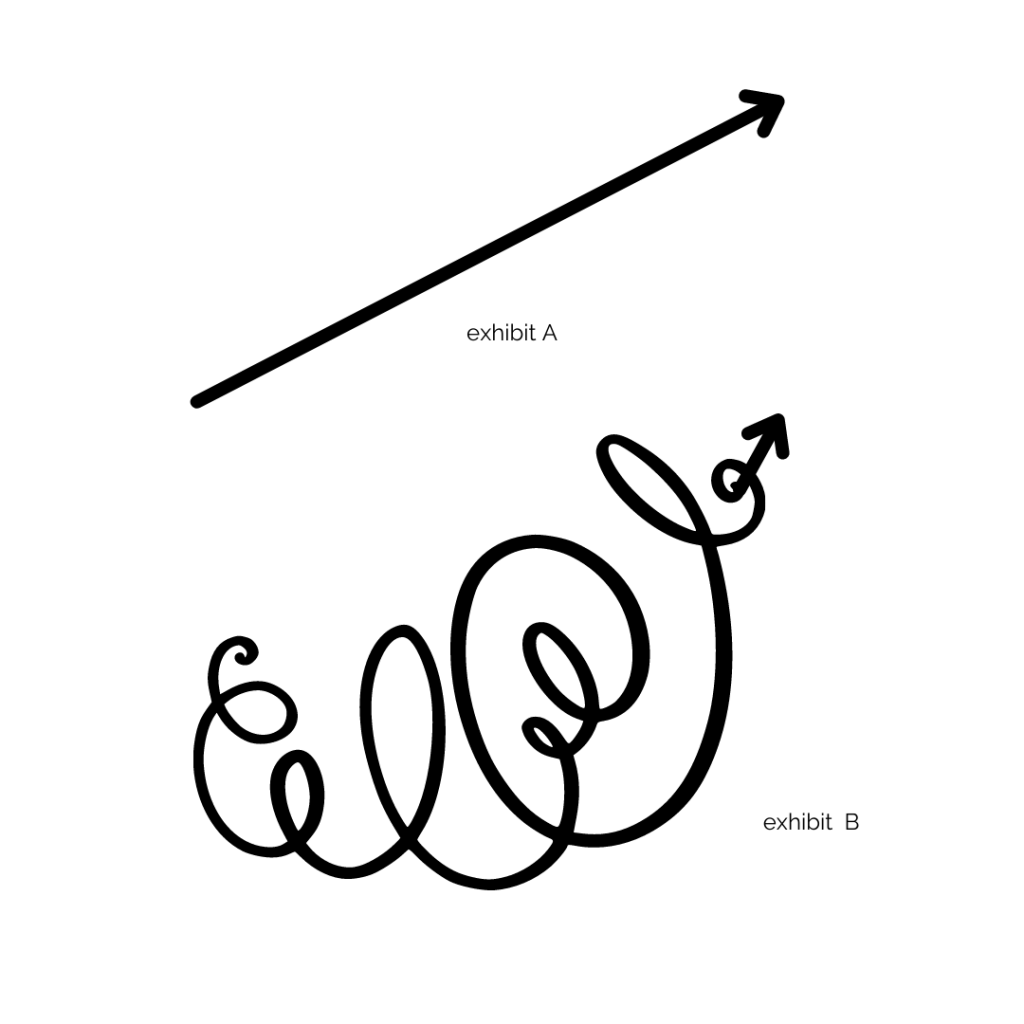Step 3: Adjust (reading time: 8 mins)
Once you have observed your thoughts, beliefs and habits, and you’ve reflected on these, the third step is to adjust.
There are three questions to ask yourself here –
- Where in my life do I need change? (hopefully step one and two have helped you to identify this)
- How do I make adjustments? (so many ways…this is where a little research can help. Hopefully future Peachy Path blogs can help with this)
- What outcome do I want? (Usually happiness for us or another)
You could swap these around – maybe you want to think about the outcome first – visualise what you want to happen or how you want things/yourself to be. Then this could give you a stronger sense of the adjustments you need to get there and what will need to change.
Habits and day to day lifestyle
Particularly in the case of habits and lifestyle, you could use this sentence:
“I want to adjust____________________(fill in the gap – using your observations and reflections, what could you adjust?)
in order to help myself _____________ “(fill in the gap with whatever you want – feel better, be happier, get well again, move on, be open to new opportunities, get through tough times)”
A simple example would be “I want to adjust my evening habits in order to help myself sleep better”
Next, make a list of adjustments which would help:
- Make sure I eat before 6pm to give my digestive system a chance to process before I go to bed
- Stop watching Netflix by 9pm
- Do not go on my phone after 9pm
- Meditate/listen to a guided meditation before bed
- Be in bed by 10pm
Even if you managed to make one of the adjustments above it could impact your chances of quality sleep.
I have used a specific lifestyle example here (and probably a common one) but the options are endless and personal to you. It depends on what it is you are navigating and what you have identified in your observations and reflections.
Thoughts
So how do you go about changing your thoughts? This is a big and interesting topic in itself. Going back to the step of observation, simply getting used to noticing those thoughts throughout the day can help you to steer away from them. You are, in essence ‘calling them out’.
Remember thoughts cannot hurt you – only where they lead in terms of our words and actions can potentially have a undesirable outcome. The old-timer unhelpful thoughts that have been there so long they’ve etched deeply into your being can often be spotted by looking at certain actions you’ve taken, choices you’ve made and habits you’ve formed – i.e. what you’ve created in past years. Some unhelpful thoughts are more new, or more on the surface and easier to identify. So how can you go about re-wiring these thoughts?
Affirmations can be helpful here (more on this in another blog). If the thoughts are related to anxiety, finding ways to relax your mind such as meditation can be helpful – seek out the particular foods, activities, people and healthy scenarios which help you to feel in the now and safe again. If the thoughts are more about self-deprecation, find ways to appreciate and accept yourself…there are many. Start with a list of what you are grateful for about yourself. Understand the role of the ego. It is there to keep you safe but will often talk you down and can result in fear or insecurity. If your thoughts are planted in the past you may feel down, trapped or depressed. Learn mindfulness to bring yourself into the now and feel grounded.
If you are exhausted your monkey mind could have taken over, so adjusting thoughts with other thoughts may not be the answer. Instead rest, sleep, relaxation, meditation or walking in nature could be the tonic you need. The change in thoughts will follow.
Change and Progress
I don’t want to end this blog without talking about change and progress, as this is an important part of navigating wellbeing, as is acceptance.
“Grant me the serenity to accept the things I cannot change, courage to change the things I can, and the wisdom to know the difference”
Change is a big word – it’s happening all the time around us, and if there’s one thing you can be sure of in life is that things can and will change.
In the context of our wellbeing, we certainly have a lot more power to change than we think. But sometimes it’s hard. We can read and listen to words until we understand the concept of change. We can look at steps towards change (like this blog) and know what we need to do. But for true transformation we really do need to look within. That’s why the second step of reflection is so important. The next natural step would then be to make changes. Some people manage to make dramatic change – such as a change to lifestyle, or a big move of location, an ending or beginning of a relationship or job – or they go cold turkey on an old habit. More often than not, we aim towards change with small adjustments. – which is why I have chosen the word ‘adjust’ instead of ‘change’.
We can also get frustrated when we don’t make progress. Sometimes a little acceptance and kindness is needed here. Using the crude illustration below – exhibit A is how we want and sometimes expect progress to go but for most people in most situations it’s a little more like exhibit B!

That’s okay, that’s normal and to be expected. Don’t lose faith in yourself. Stop if you’re tired, change course if you need to but don’t forget that small adjustments are all big wins as they will eventually lead you to change.
Helping yourself isn’t selfish
There are two important things I’ve learnt along my journey –
- You cannot change another person
- The only person you can change is yourself
That isn’t to say we cannot help others, but we can only take them so far. How wonderful and empowering is it though, that we have the power to help ourselves? In some ways it takes the burden off us when we stop trying to change others and the world around us and realise that the best thing we can do is to help ourselves, and in doing so, evolve ourselves and impact the people and world around us more positively.
Of course, we cannot change everything, but we do have a lot more influence and ability to effect things than we believe. If you imagine we are all linked to each-other and to life like one big web and our thoughts (or consciousness) act like ripples across the web, interacting with others and the world around us, we can hopefully see the importance of self-reflection, self-care and personal evolution.
Final note
Thank you for reading this far. There are a lot of words here and the concepts are vast, with so much more to say. I’ve scratched the surface here.
Although the three steps of how to navigate are simplified here, if you start using them regularly they could have a lot of impact. It’s almost like a cycle of self-help and self-care and the more you do it, the easier and clearer it will be.
The Peachy Path blogs moving forward will be shorter and more focused on a specific topic or general introductory overview in the areas of psychology, spirituality, wisdom, complementary therapies, nourishing foods, chakras and energy systems, nature and more…
I hope this mammoth 3-part blog on ‘How to Navigate’ has formed a good foundation for all that is to follow.
